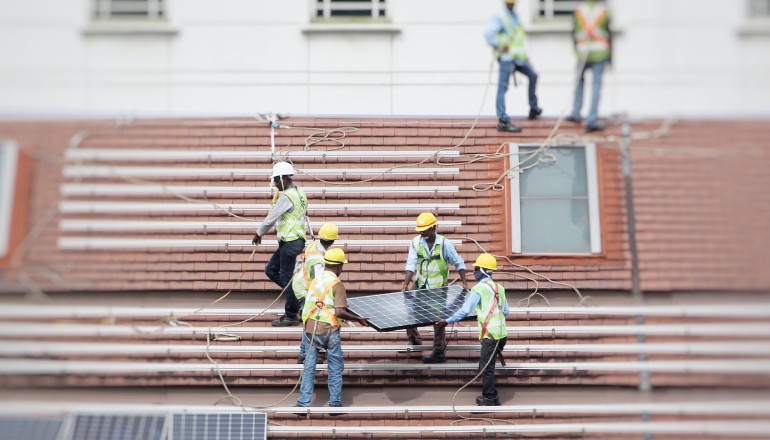American Solar–First Solar, Inc. has entered into a 15-year, captive Power Purchase Agreement (PPA) with Cleantech Solar. CleanTech Solar is a provider of renewable energy solutions to corporations in India and Southeast Asia.
Cleantech Solar will construct 150 MW of PV solar and 16.8 MW of wind assets in Tamil Nadu, providing 7.3 GWh of clean electricity to First Solar’s new 3.3-gigawatt (GW) vertically integrated solar manufacturing facility.
The agreement:
Cleantech Solar plans to meet 70% of the facility’s electricity needs by Q3 2024, replacing 7,000 kilotons of CO2 emissions. They will purchase 150 MW of India-made Series 7 thin film solar panels from First Solar. The modules will be used to power the PPA’s solar PV section. Delivery of the modules is anticipated in the first half of 2024.
The agreement is believed to be one of the largest intra-state PPAs in India and the projects being developed across Cleantech Solar’s renewable energy parks in Tamil Nadu are already providing solar, wind, and hybrid energy solutions to its corporate customers. With this latest agreement, Cleantech Solar’s total portfolio size in Tamil Nadu now stands at nearly 500 MW across operations and construction stages, and includes solar, wind, and hybrid power projects, the companies said in a press release.
Quotes:
“Our new manufacturing facility in Tamil Nadu sets a high benchmark for responsible and sustainable vertically integrated solar manufacturing, not just in India, but globally,” said Sujoy Ghosh, Vice President and Managing Director, First Solar, India. “By powering our operations with clean, renewably-generated electricity, we are working to further reduce our environmental footprint, which is already the lowest in the industry.”
“This collaboration enables our partners’ efforts to diversify their energy sources, integrate renewable energy into their operations, and achieve a higher degree of stability and sustainability in their power supply. This partnership exemplifies our commitment to advancing sustainable energy solutions and reinforces our position as a key player in the renewable energy landscape. We look forward to a mutually beneficial relationship with First Solar, contributing to the growth and success of both organizations,” said Sachin Jain, Chief Executive Officer, Cleantech Solar.
Endnote:
It must be noted that First Solar’s Tamil Nadu plant is the world’s first net-zero water withdrawal solar manufacturing facility, utilizing tertiary-treated reverse osmosis water from a sewage treatment plant. It also houses India’s first photovoltaic solar recycling plant, pioneering high-value solar recycling.

